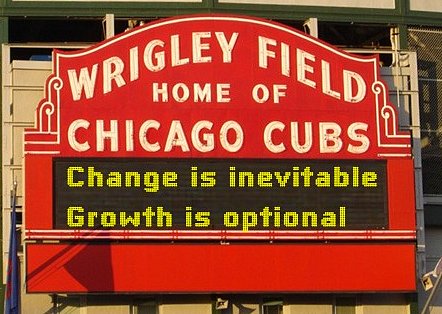Edging In, Edging Out

============================================================
Most days, I don’t trade. ?I study.? I model. ?I muse. ?I plan.
There are some clever traders out there. ?I am not one of them. ?What little trading I do is done efficiently and effectively to get the best prices for assets that I want to buy and sell, but that’s not where most of the money is made in investing.
I can be like a chef who goes out to the market in the morning and buys the best ingredients available that day at great prices, except that my period of analysis is years, not a day. ?The point is that I consider the deals that the market is offering, and choose attractive ones that will benefit my clients and me for years to come. ?(I am still the largest investor that I manage money for — I eat the exact same meal that I serve to clients.)
What trading I do divides into two categories, which are designed for two different time horizons. ?The first time horizon is long — 3-10 years in length. ?Can I find companies with good or better business prospects trading at prices more attractive than the businesses that I currently own?
This is mostly a patient thing, unless I conclude that I got something materially wrong, in which case I try to be quick to sell. ?Patience is needed, because investing is like farming. ?It doesn’t grow overnight. ?It will take time for value to be built, and time for people to recognize that the company is better than they thought it was. ?It won’t be a linear process, either, unless something unusually good happens. ?There are setbacks with almost every?winning investment. ?Keep your eyes on the main drivers of growth in value, and whether management is using excess cash to the best?ends, which will vary by company.
At least half of my winners spent time as an unrealized capital loss at some point. ?My timing is sometimes nonideal, but ideal timing is not required for great results if the time horizon is years. ?So I watch?and monitor, and occasionally trade away the position when I find something with materially better prospects.
As an aside, not all RIA clients would like this, because it looks like I’m not doing that much. ?I sometimes wonder how much better money management would be if clients were happy with portfolios that don’t change much and don’t have many of the current hottest and most recognizable companies in them. ?Portfolios filled with?unknown companies in boring but profitable industries… difficult to talk about at parties, but often more profitable.
What I have mentioned above is 85% of what I do. ?The shorter-run movements of the market provide the other 15% as ideas and companies go in and out of favor in the short run. ?I mentioned that my timing is often not the best. ?This gives me an opportunity to do a little better.
I’ve mentioned that I use a 20% band around my position weights for the companies that I own. ?As prices fall and hit the bottom of the band, I buy enough to come back up to the target weight. ?Vice-versa for when the price hits the upper band.
20% is a significant move — it’s enough to justify the trading costs. ?If the company is still a good one, the fall in price gives me the opportunity to lower my average cost modestly. ?Note that this is a modest change — I’m not trying to be a hero or a home-run hitter. ?I learned better when I was younger that making timing decisions on that level is too undisciplined. ?It is far better to edge in and edge out around a core position — with a good company, a lower price means lower risk, and a higher price means higher risk, so this method is always taking and shedding risk at appropriate levels.
Edge in, edge out — trades like this happen a few times a month — more frequently when the market is lively, less often when it is sleepy. ?Hey, don’t force things. ?This is gradual reallocation of money from less to more attractive homes for capital. ?The time horizon here is 3-12 months, and offers the ability to make a little more off of core positions.
Over 5 years, companies that I own might have a grand total of 5-10 trades from edging in and out. ?It will always be a mix of both buys and sells — few companies don’t have moves of 20%+ down amid growth. ?(As some will note, if markets are efficient, why is there such a large gap between 52-week highs and lows for individual stocks? ?Really, markets aren’t efficient — they are just very hard to beat.)
Now, others will come up with different ways of managing multiple time horizons in investing, but this method offers a decent balance between the short- and long-terms, and does so in a businesslike, disciplined way. ?And so I edge in and edge out.
[bctt tweet=”This balances the short- and long-terms, and does so in a businesslike, disciplined way.” username=”alephblog”]










